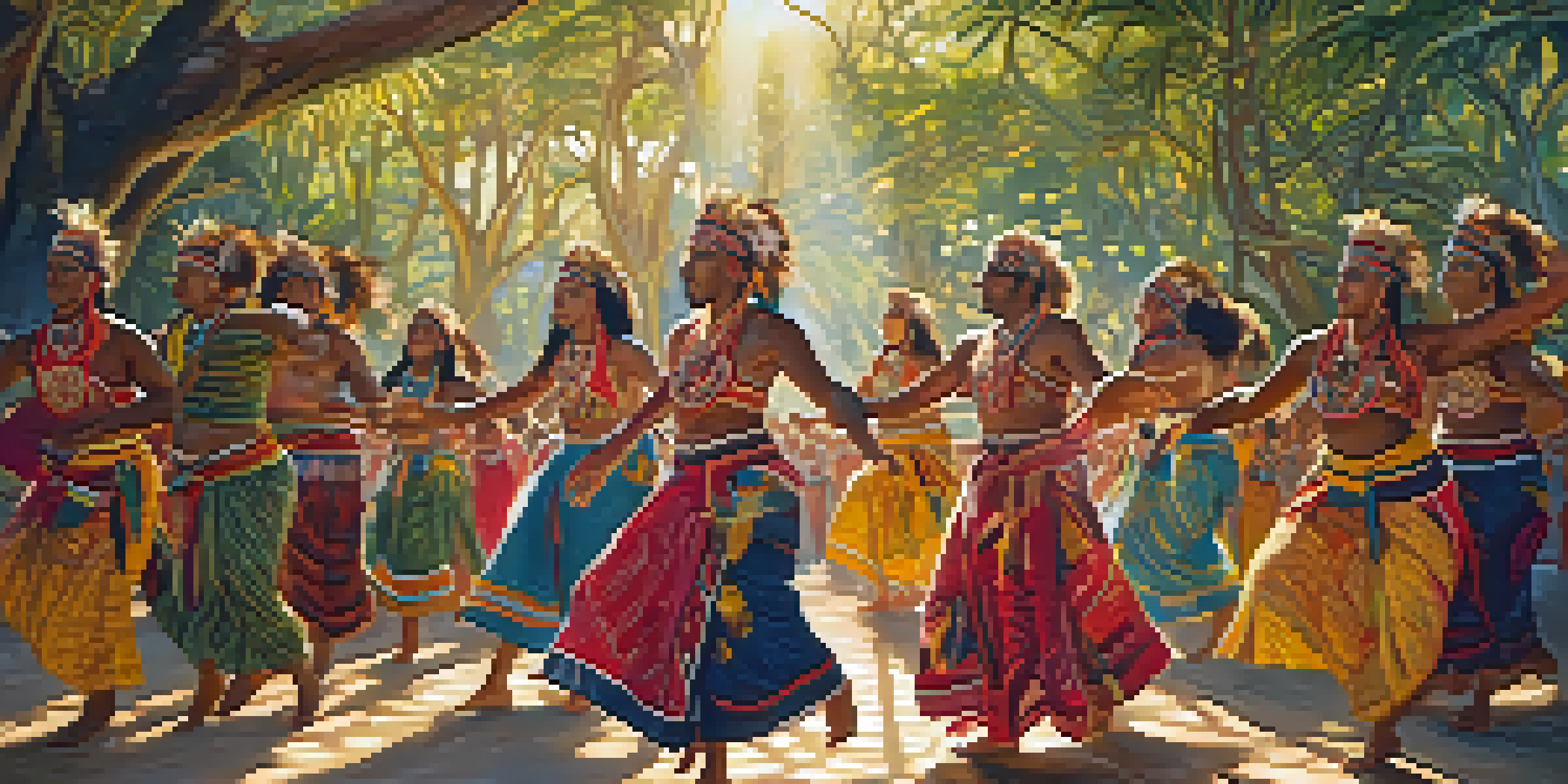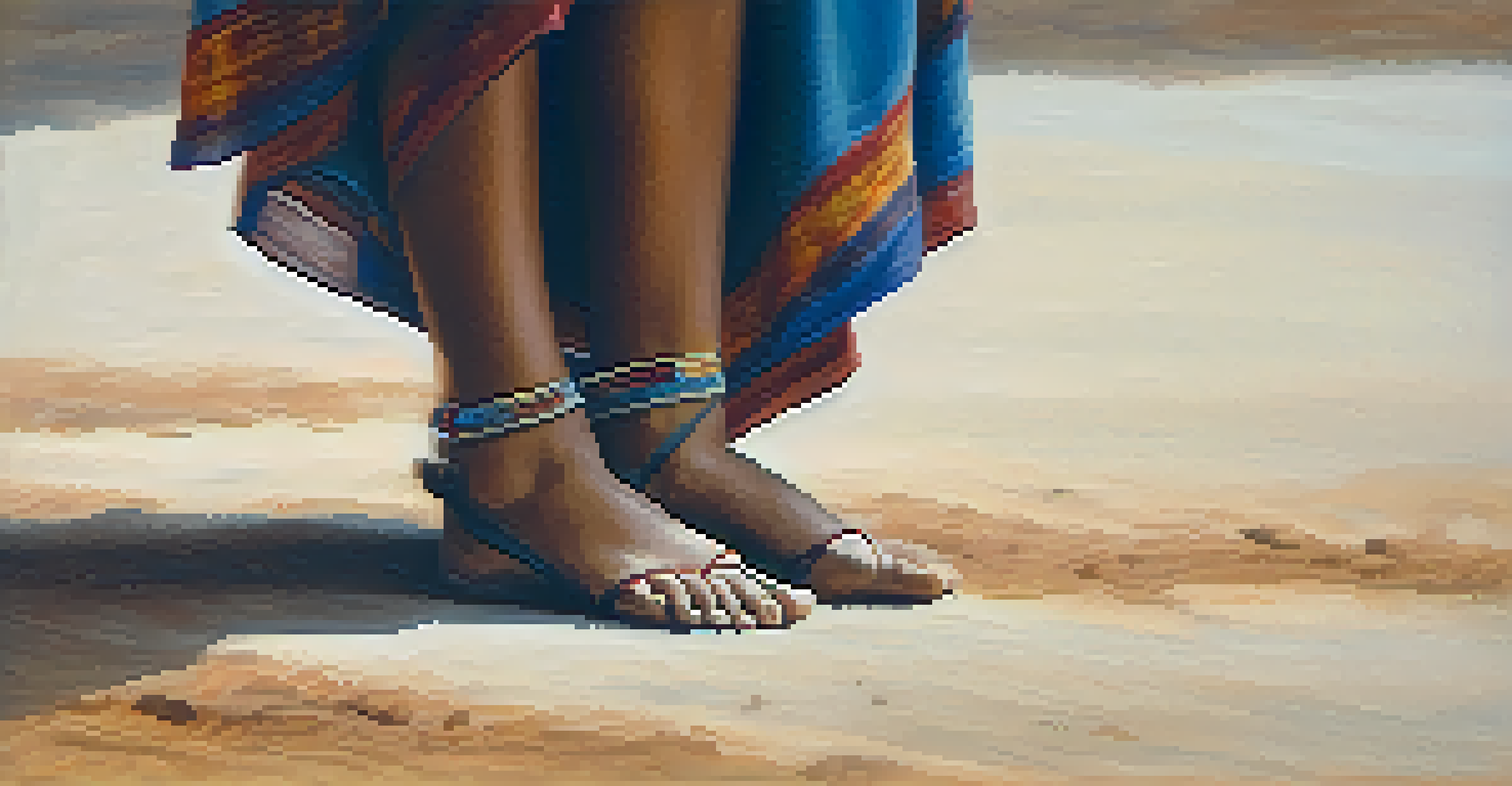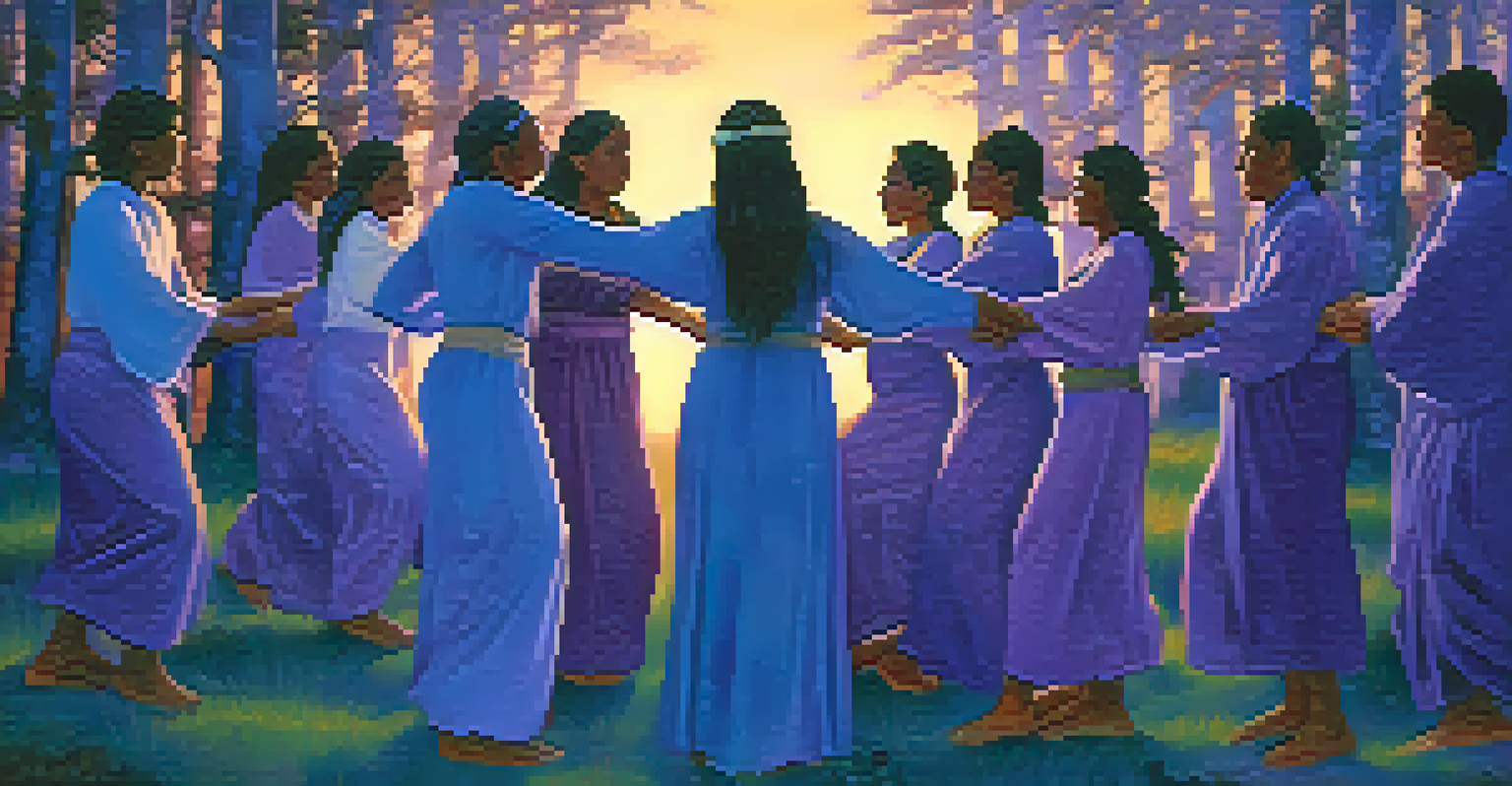The Influence of Dance on Healing in Indigenous Australian Cultures

Understanding Indigenous Healing Practices
Indigenous Australian cultures have a rich tapestry of healing practices that intertwine with their spiritual beliefs. Healing goes beyond physical ailments; it encompasses mental, emotional, and spiritual well-being. Traditionally, Indigenous healers, often referred to as 'clever men' or 'clever women,' employ various methods, including dance, to restore balance and harmony.
Dance is the hidden language of the soul.
Dance is not just a form of expression; it serves as a vital medium for storytelling and cultural transmission. Through dance, Indigenous communities pass down knowledge and traditions, ensuring that their heritage remains alive. This process of sharing stories through movement creates a deeper connection among community members and reinforces their collective identity.
In this context, healing becomes a communal activity. When individuals participate in dance, they are not only seeking personal healing but also contributing to the well-being of the entire community. This interconnectedness highlights the importance of social bonds, which are pivotal in Indigenous Australian cultures.
The Role of Dance in Spiritual Practices
In Indigenous Australian cultures, dance often plays a significant role in spiritual practices. Ceremonial dances are performed to honor ancestors, celebrate milestones, and invoke the spirits for guidance and healing. Each movement is imbued with meaning, reflecting the deep connection between the physical and spiritual realms.

For instance, the Corroboree is a well-known ceremonial dance that brings together community members to participate in storytelling, often related to the Dreamtime—a foundational aspect of Indigenous spirituality. These events serve as a reminder of the land's significance and the interconnectedness of all living things.
Dance as a Healing Practice
Dance serves as a holistic healing method that encompasses physical, emotional, and spiritual well-being within Indigenous communities.
Through dance, participants enter a meditative state, allowing for introspection and spiritual connection. This transformative experience can lead to personal revelations and a sense of peace, which is essential for healing. It demonstrates how movement can facilitate a deeper understanding of one's place within the universe.
Healing Through Movement: How Dance Works
Dance as a healing practice involves both physical and psychological components. The rhythmic movements and music can stimulate endorphin release, which alleviates stress and promotes feelings of happiness. This biological response is a reminder of how our bodies can respond positively to movement.
Healing takes courage, and we all have courage, even if we have to dig a little to find it.
Moreover, dance encourages self-expression, allowing individuals to communicate emotions that they might struggle to articulate verbally. This process can be therapeutic, providing an outlet for grief, joy, or pain. As dancers move, they often find relief in expressing their experiences, which can be particularly healing.
Additionally, the communal aspect of dance fosters a supportive environment. When individuals dance together, they create a space of shared experience, which reinforces social ties and reduces feelings of isolation. This collective participation can significantly enhance the healing process.
Cultural Significance of Dance in Indigenous Communities
Dance holds immense cultural significance in Indigenous Australian communities, serving as a means of preserving and transmitting cultural heritage. Each dance has its own story, often reflecting the history, values, and beliefs of the community. This preservation is vital, especially in a world where many Indigenous languages and traditions are at risk of disappearing.
Participating in traditional dances fosters pride and identity among community members. It is a way to honor ancestors and acknowledge the struggles and triumphs of previous generations. Through these movements, dancers connect to their roots, reinforcing a sense of belonging and purpose.
Cultural Significance of Dance
In Indigenous Australian cultures, dance plays a crucial role in preserving heritage and fostering community identity through intergenerational knowledge.
Moreover, dance acts as a bridge between generations. Elders pass down the knowledge of dance to younger members, ensuring that cultural practices are not lost. This intergenerational exchange is crucial for the survival of Indigenous identities and traditions.
Case Studies of Dance and Healing
Several studies have highlighted the positive impact of dance on healing within Indigenous Australian communities. For instance, programs incorporating traditional dance into therapeutic settings have shown promising results for mental health outcomes. Participants often report feeling more connected to their culture and community, enhancing their well-being.
One notable example is the use of dance in recovery programs for individuals dealing with trauma. Incorporating cultural practices like dance enables participants to reclaim their identity and navigate their healing journey. This approach not only addresses individual needs but also strengthens community bonds.
These case studies illustrate that the benefits of dance extend beyond mere physical activity; they emphasize the importance of cultural relevance in healing practices. By aligning therapeutic methods with cultural traditions, communities can facilitate deeper healing experiences.
The Future of Dance in Indigenous Healing
As the world increasingly recognizes the importance of holistic healing, Indigenous practices like dance are gaining attention. There is a growing movement to integrate traditional healing methods into mainstream healthcare, acknowledging their efficacy and cultural significance. This shift is promising for the future of Indigenous health.
However, it is essential to approach this integration with respect and understanding. Collaborating with Indigenous communities ensures that practices are honored and that cultural integrity is maintained. This partnership can lead to innovative approaches to health that are culturally appropriate and effective.
Future Integration of Traditional Healing
The growing recognition of Indigenous healing practices, particularly dance, highlights the importance of integrating cultural methods into modern healthcare systems.
Ultimately, the future of dance in Indigenous healing lies in the balance between tradition and modernity. By valuing Indigenous knowledge and practices, we can enrich our understanding of healing and create more inclusive healthcare systems.
Conclusion: The Lasting Impact of Dance on Healing
The influence of dance on healing within Indigenous Australian cultures is a profound testament to the power of movement and community. It highlights the intricate relationship between cultural practices and health, showing that healing is not just an individual journey but a collective experience. Dance, as a healing practice, fosters connections that transcend time and space.
As we continue to explore the healing potential of dance, it is crucial to honor the traditions and knowledge of Indigenous peoples. Their practices offer valuable insights into holistic health and well-being, encouraging us to rethink our approaches to healing.

In embracing the healing power of dance, we celebrate the resilience of Indigenous cultures and recognize the importance of preserving their rich heritage. This journey of understanding not only benefits Indigenous communities but also enriches our global cultural landscape.